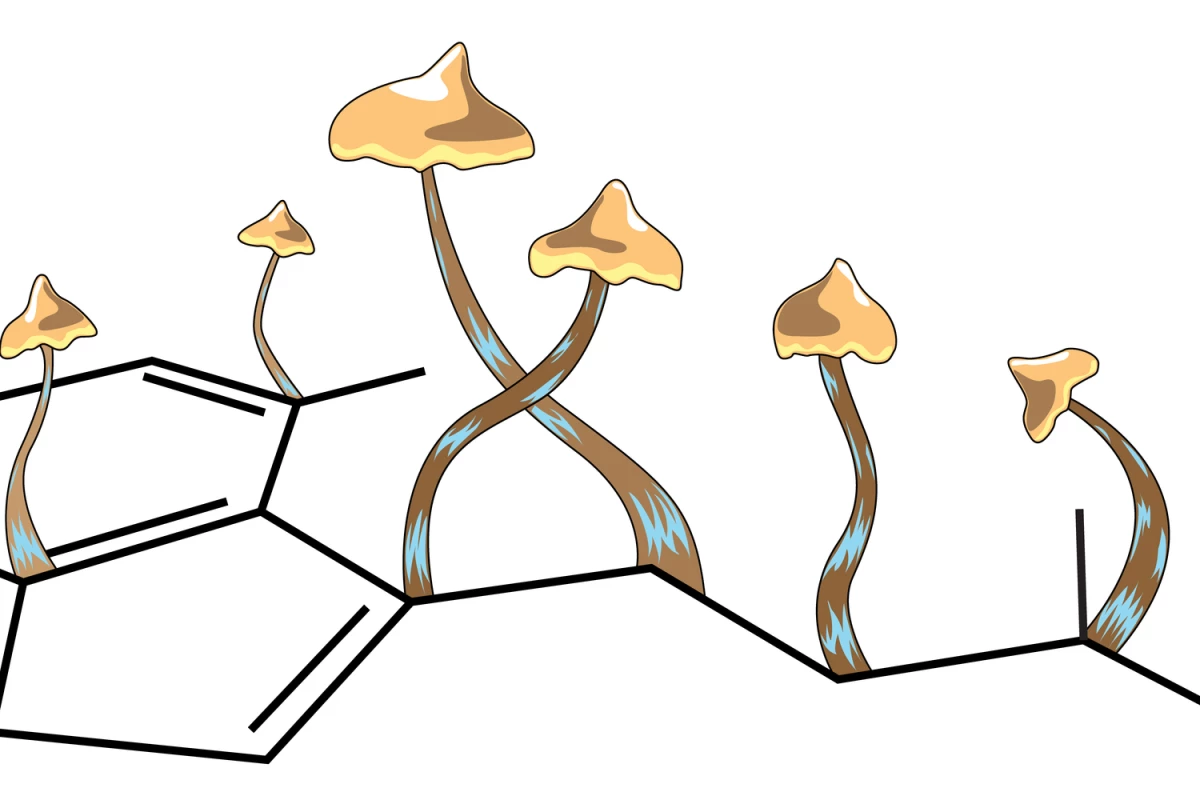An extraordinary new study from a team of scientists at Yale University is reporting the first direct cellular demonstration of a single psilocybin dose inducing neural plasticity in a mammalian brain. The researchers show how the psychedelic prompts rapid growth of neural connections in the frontal cortex of mice and hypothesize this mechanism playing a role in the drug’s antidepressant qualities.
Over the last decade psychedelic science has been accelerating at a rate not seen in half a century. MDMA for PTSD and psilocybin for depression are both in late-stage human trials and on the verge of clinical approval, however, we still know very little about how these psychedelic compounds actually generate their therapeutic effects.
Years of good study into depression have given psychedelic researchers clues to where they should be looking. We know depression is associated with synaptic atrophy in the frontal cortex. We also know rapid-acting anti-depressants can improve mood by reversing these synaptic deficits, essentially increasing the volume of neuronal connections in these key brain regions.
So, do psychedelics promote that same kind of neural plasticity?
This new research, published in the journal Neuron, suggests the answer is yes … at least in mice.
Using chronic two-photon microscopy the researchers imaged the synaptic architecture of the medial frontal cortex in a number of mice. The imaging focused on the number and density of neuronal connections, called dendritic spines. Seven imaging sessions were conducted, beginning before a single dose of psilocybin was administered and stretching up to a month after.
Within 24 hours of that single psychedelic dose the researchers detected increases in dendritic spine size and density. These changes were noted as occurring extremely quickly and also unexpectedly enduring.
One month later a small amount of these new neuronal connections were still present. Alex Kwan, senior author on the study, says it was surprising to see just one dose of psilocybin lead to persistent structural change in the mice brains.
"We not only saw a 10 percent increase in the number of neuronal connections, but also they were on average about 10 percent larger, so the connections were stronger as well," says Kwan. "It was a real surprise to see such enduring changes from just one dose of psilocybin. These new connections may be the structural changes the brain uses to store new experiences."
Administering psilocybin caused ~10% increases in spine density and spine head width, effects that were observed within 1 day of injection. Some of the newly formed spines persisted 1 month later. 5/7 pic.twitter.com/Thuln7WrJV
— Alex Kwan 關進晞 (@kwanalexc) February 18, 2021
Alongside these structural changes the researchers note functional and behavioral changes were also detected in the animals following the single psilocybin dose. Increased excitatory neurotransmission in the frontal cortex was measured in the mice and stress-related behaviors reduced. This finding suggests these structural brain changes could play a role in some of the therapeutic benefits seen with psychedelics.
Perhaps most interesting is the study’s attempt to disassociate the structural brain changes caused by psilocybin from the drug’s acute psychedelic effects. The researchers used a drug called ketanserin to block 5-HT2 receptors, the pathway by which many believe psychedelic drugs induce their acute “trippy” effects.
Ketanserin effectively stifled head-twitch responses in the animals, which is the primary observational measurement used to track acute psychedelic sensations in mice. But the ketanserin did not block any of the psilocybin-induced brain plasticity changes.
“The possibility to disrupt psilocybin’s acute behavioral effects without abolishing structural plasticity actions has clear implications for treatment in the clinic,” the researchers hypothesize in the study. “However, it is not yet clear if the results will extrapolate to humans.”
Whether the therapeutic actions of psychedelics can be separated from the acute effects is perhaps one of the biggest unanswered questions in psychedelic science. The researchers do note ketanserin is known to only block around 30 percent of 5-HT2 receptors in rodents so it is certainly possible the neural plasticity induced by psilocybin is still mediated through that pathway. A lot more work will be necessary to understand exactly what is going on here, and the jury is certainly still out on whether these psychedelic drugs can generate therapeutic effects without generating an acute psychedelic experience.
The research is the first to directly demonstrate these specific structural neural changes induced by psilocybin in a mammal brain. Another very recent study looking at the effects of a single psilocybin dose in a pig brain saw similar signs of psychedelic-induced neural plasticity. That research saw psilocybin increase levels of a key protein known to enhance neuroplasticity.
The new study was published in the journal Neuron.
Source: Yale University




